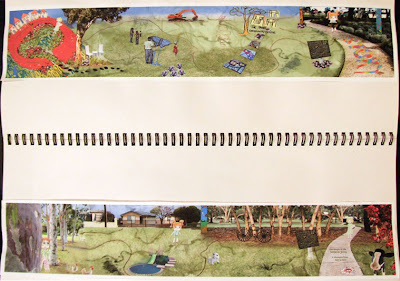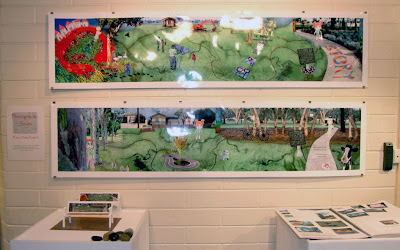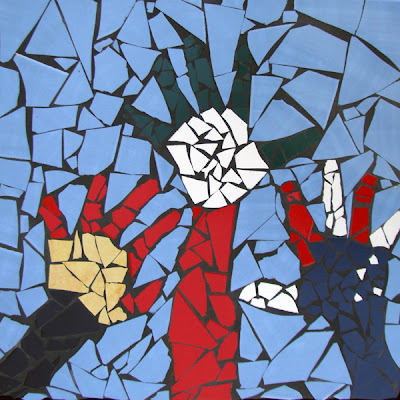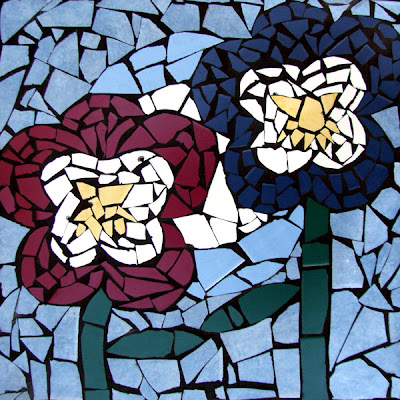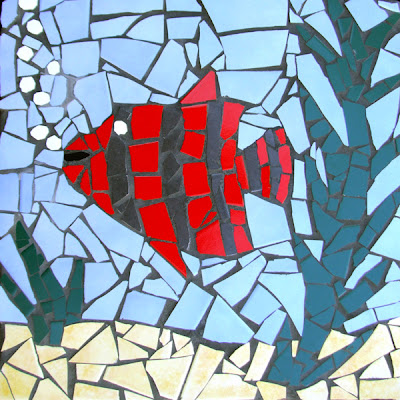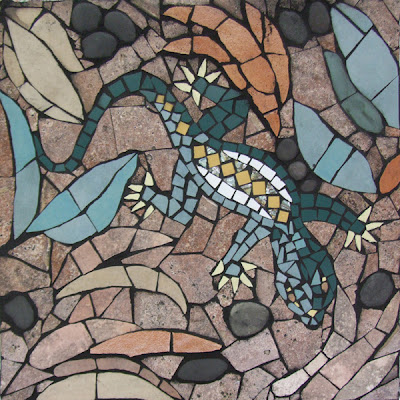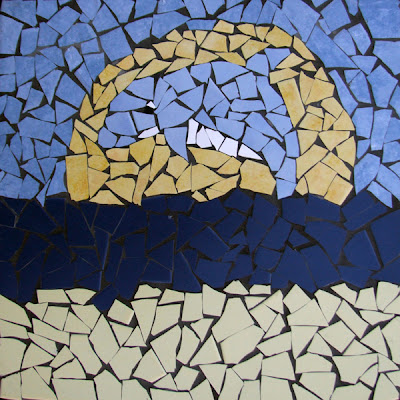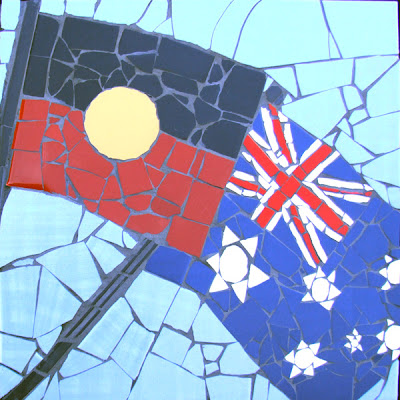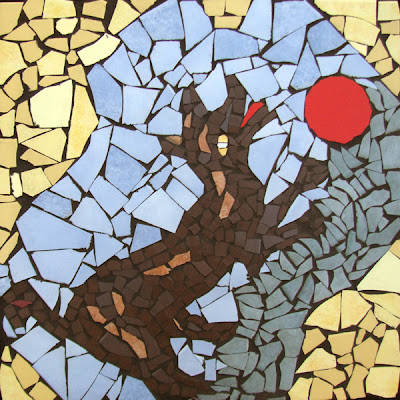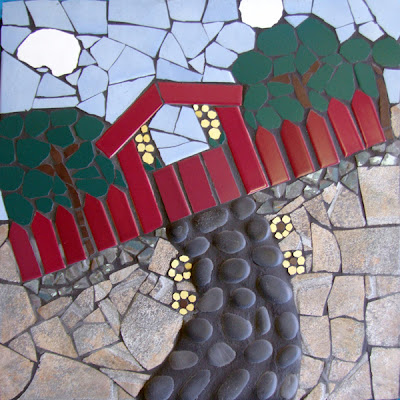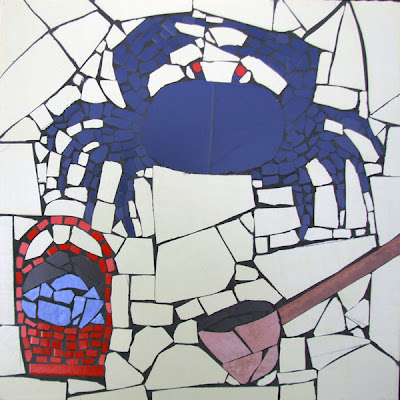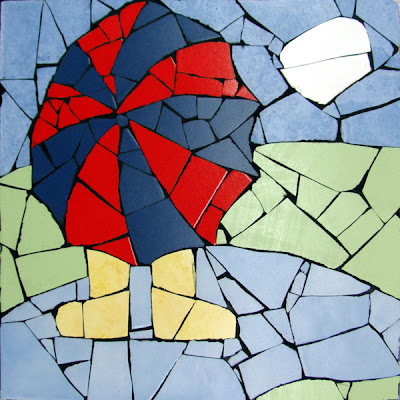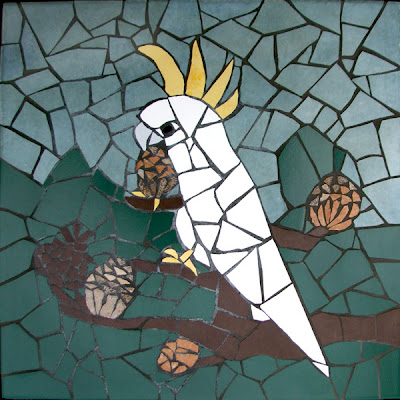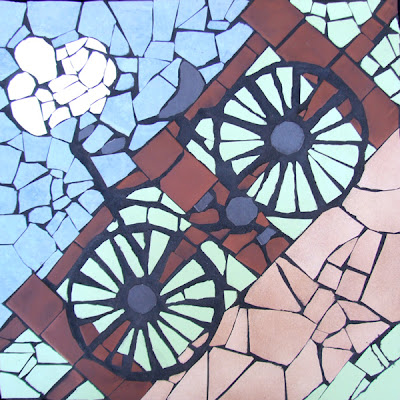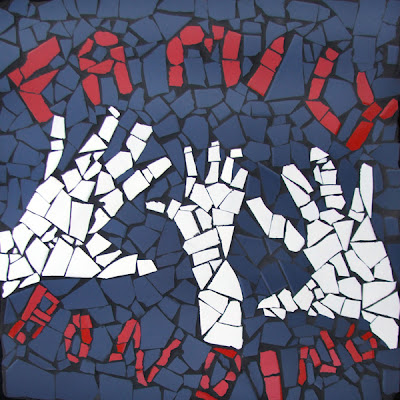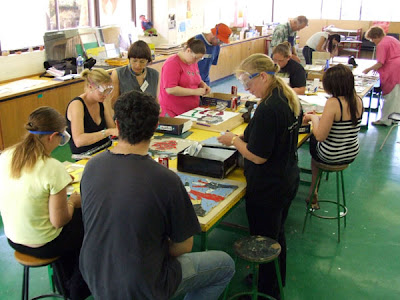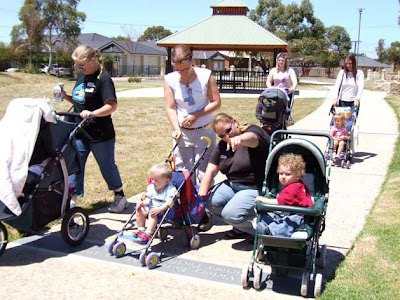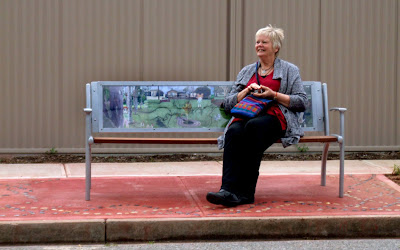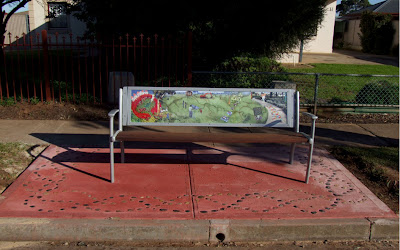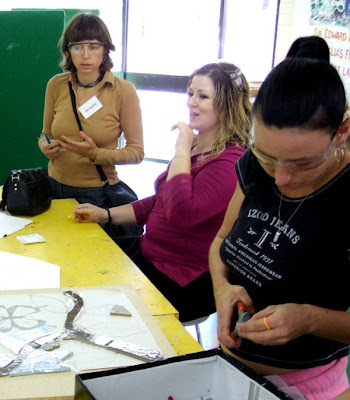
I have been working as a freelance artist for 10 years now, working on public art commissions and community art projects. My role on this project was to coordinate and run the workshops, order and purchase all materials and teach mosaic techniques. Karen Tenni, the facilitator and I worked as a team. I live about 10 minutes from the Parks Community Centre.
As a tutor I encouraged people to develop ideas, draft them and create their image in mosaic. At the time of this project my children were 3 and 5, so I felt an affinity with the young mothers group. I know the value of having an hour away from the children, to connect with friends and have some "adult time". I also felt an affinity with the group of senior citizens, who had consolidated their friendship through a love of mosaic (it's hard to down tools sometimes!). This group had been meeting each week for a year of their own volition. They were keen to join the project to learn new skills.
The theme of the artwork was "little treasures". The mosaic pavers would be discovered in the footpath by locals walking by. I asked participants to make an image that had meaning to them, a memory from childhood or something experienced with their children. People were encouraged to work together, which strengthened friendships and connections between individuals and the two very different groups participating. People shared stories, memories, we talked about where we all grew up (surprising how far afield our Parks locals came from!). We talked about health, children, pregnancy, birth and a new grandchild in the seniors' group. The value of the project was the friendships and support within the group as well as the common goal of making art for our local area, "The Parks".
As a tutor I encouraged people to develop ideas, draft them and create their image in mosaic. At the time of this project my children were 3 and 5, so I felt an affinity with the young mothers group. I know the value of having an hour away from the children, to connect with friends and have some "adult time". I also felt an affinity with the group of senior citizens, who had consolidated their friendship through a love of mosaic (it's hard to down tools sometimes!). This group had been meeting each week for a year of their own volition. They were keen to join the project to learn new skills.
The theme of the artwork was "little treasures". The mosaic pavers would be discovered in the footpath by locals walking by. I asked participants to make an image that had meaning to them, a memory from childhood or something experienced with their children. People were encouraged to work together, which strengthened friendships and connections between individuals and the two very different groups participating. People shared stories, memories, we talked about where we all grew up (surprising how far afield our Parks locals came from!). We talked about health, children, pregnancy, birth and a new grandchild in the seniors' group. The value of the project was the friendships and support within the group as well as the common goal of making art for our local area, "The Parks".


